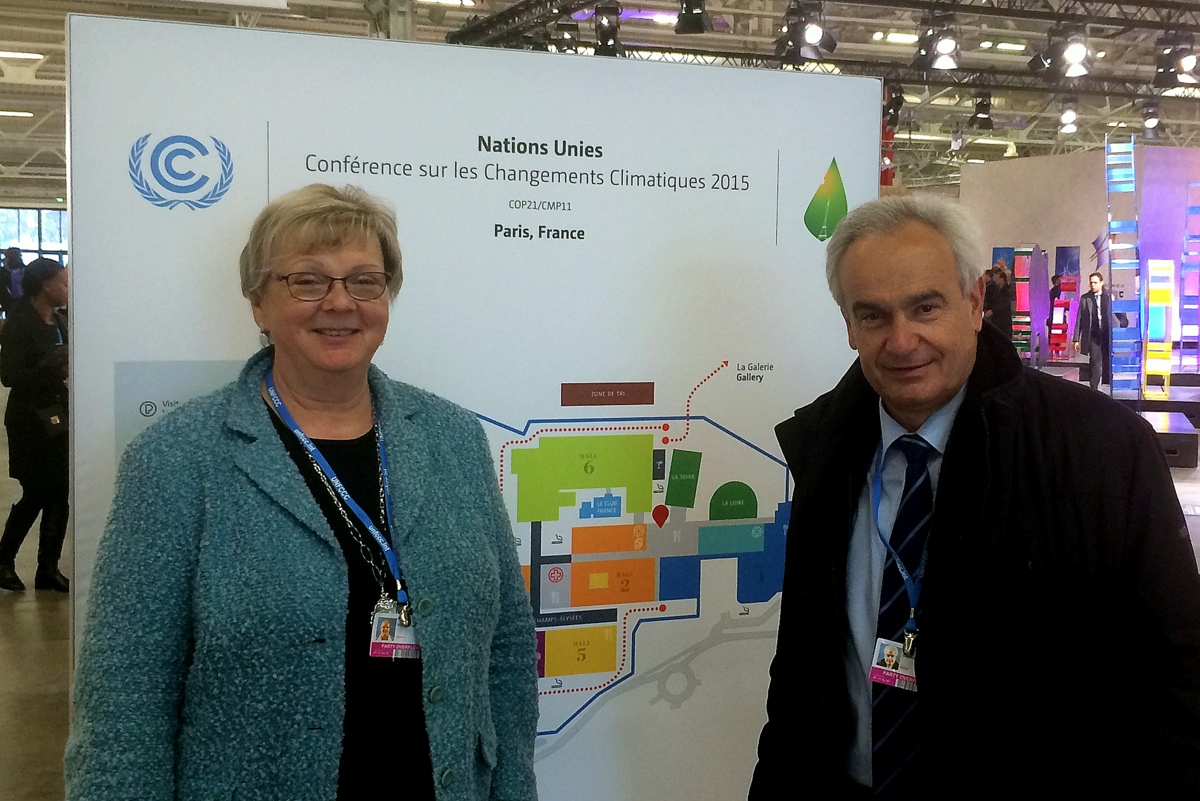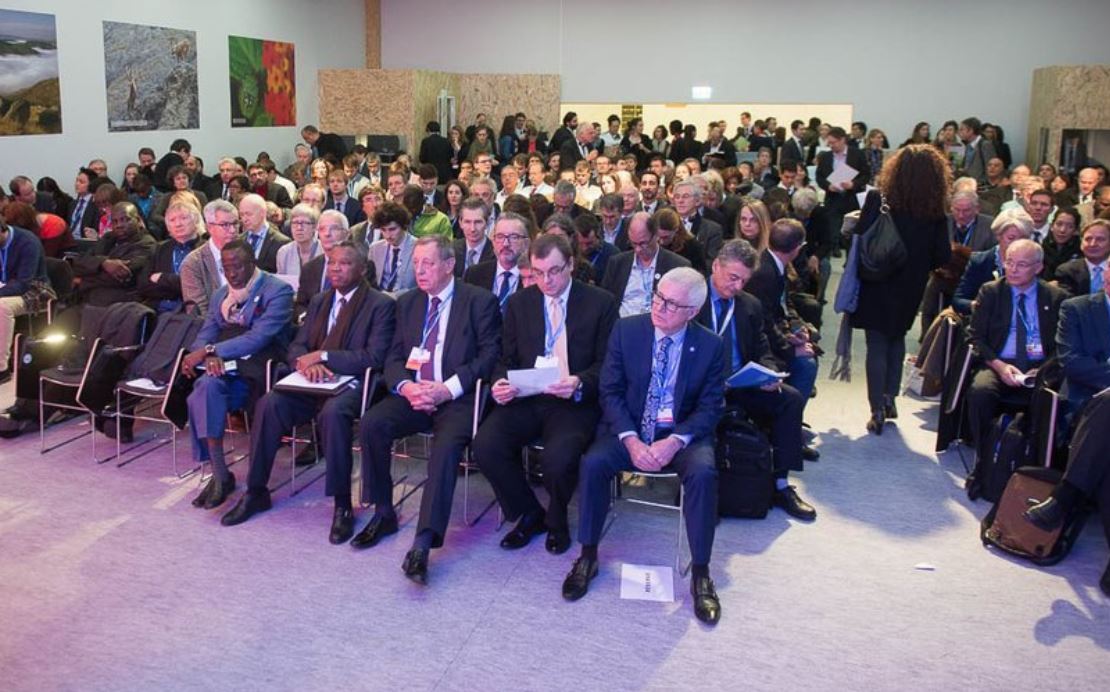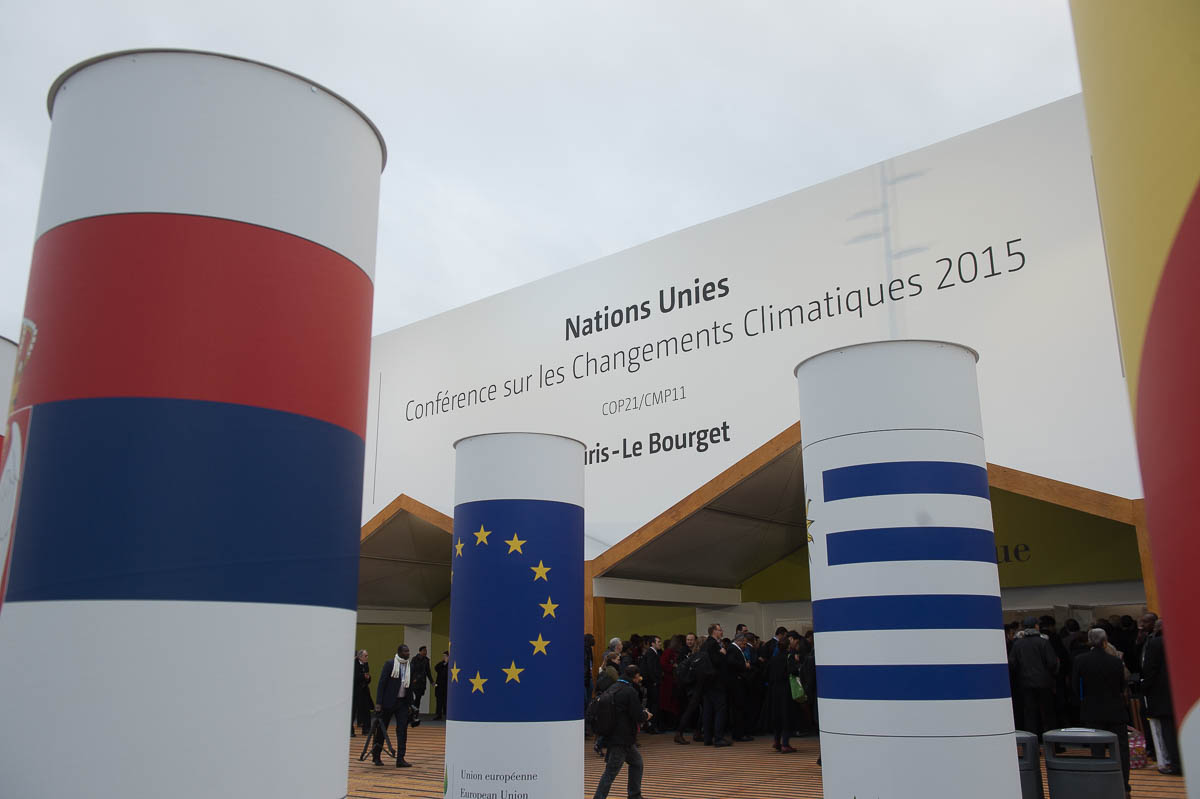
Ministers in charge of agriculture or the environment, or alternatively their representatives, from Germany, Australia, Bulgaria, Spain, Estonia, France, Japan, Lithuania, Morocco, New Zealand, Poland and Uruguay also participated in this day, as well as the Director-General of the FAO, and representatives from the World Bank, IFAD, numerous research institutes and Non-Governmental Organisations. The work essentially focused on the contribution of agriculture to CO2 sequestration as part of the international research initiative 4 per 1000.

The objective is to strengthen public policies and research programmes in order to increase stocks of organic material from soils by 0.4% per year. Such an increase would make it possible to compensate for all of the planet's greenhouse gas emissions. Carbon sequestration in agricultural soils is one of the contributions of agriculture and forestry, in order to reduce greenhouse gas emissions.
The OIV has joined forces with this initiative, which strives for a transition towards productive and sustainable agriculture founded, in particular, on adapted soil management.
These objectives largely coincide with the actions underway at the OIV with regard to sustainable viticulture and climate change.
The OIV, which has placed the promotion of sustainable viticulture at the top of its 5 strategic axes for 2015-2019, taking into account the challenges of climate change, adopted the General Principles of the OIV Greenhouse Gas Accounting Protocol for the Vine and Wine Sector in 2011 (Resolution OIV-CST 431-2011)

This protocol defines principles for the calculation of emissions and sequestration of greenhouse gases (GHG), expressed in the carbon dioxide equivalent, for the vitivinicultural field.
The specific objectives of the OIV GHG protocol are:
- to help companies working in the vitivinicultural sector to prepare a GHG inventory that represents a true and fair account of their emissions, through the use of standardised approaches and principles,
- to simplify and reduce the costs of compiling a GHG inventory,
- to provide the sector with information that can be used to implement effective strategies to manage and reduce GHG emissions,
- to increase consistency and transparency in GHG accounting and reporting among various companies and GHG programmes.
On this basis, in 2015 the OIV adopted an inventory of emissions and sequestrations that is intended to provide specific information on the aspects to be taken into consideration for the calculation of GHG emissions of a company or particular product based on the area considered (Resolution OIV-CST 503AB-2015).
This work is continuing within the framework of the work programme so as to develop a frame of reference for data collection by developing a detailed, multi-criteria approach going beyond the solely "carbon" approach while paying particular attention to the aspects of water management, biodiversity and pesticide reduction.
